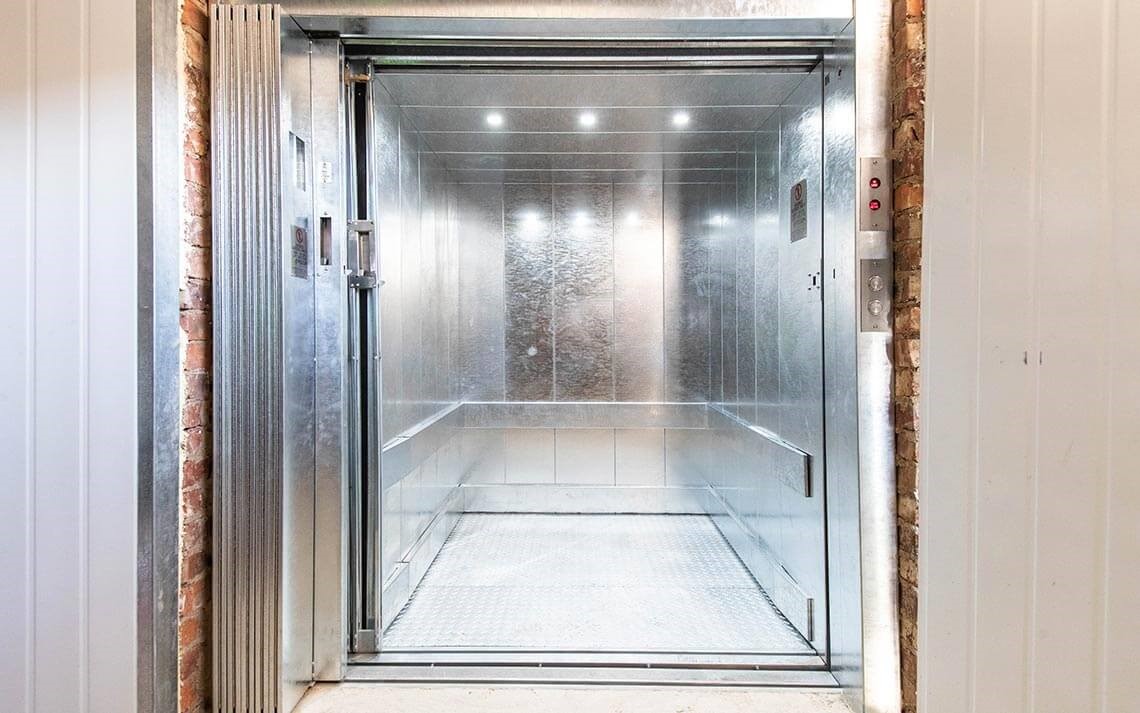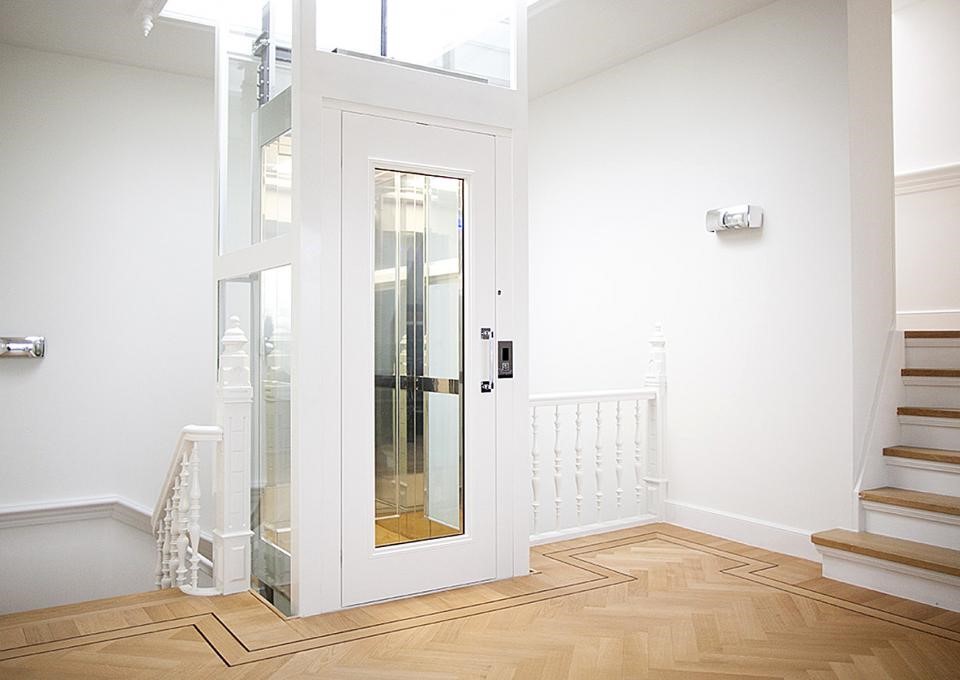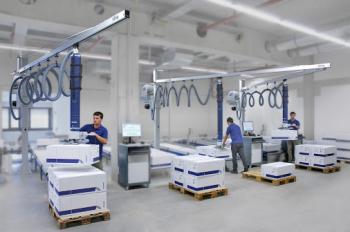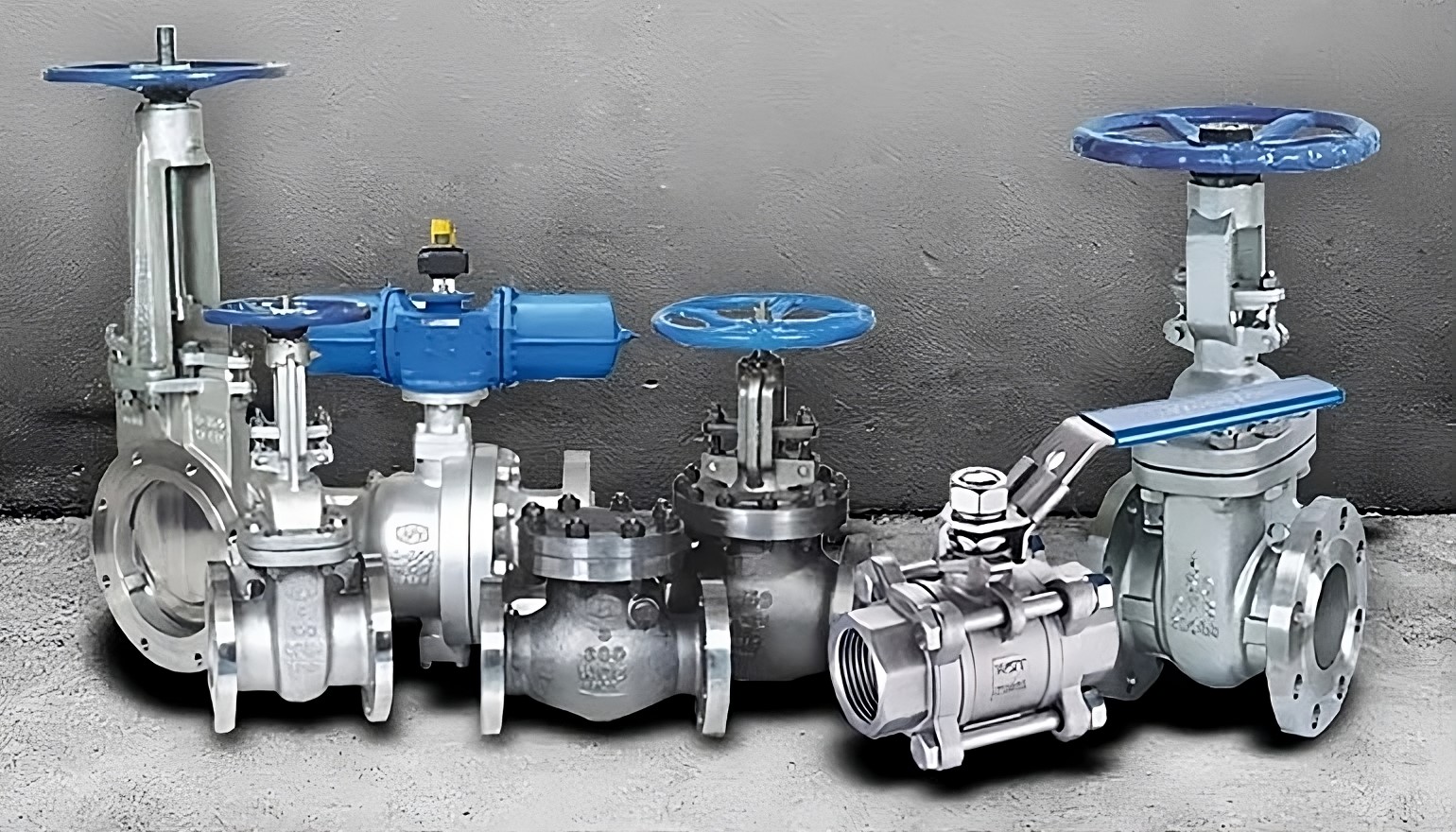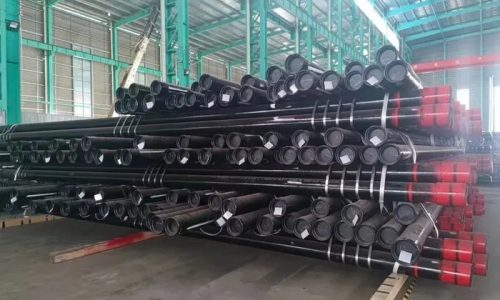What’s the Point of Goods Hoists? In any business decision, time, cost, and convenience are among the most significant factors for consideration. With elevators, it all comes down to a simple question: “What are you moving?” If you need to move people between floors, then a passenger lift is normally a great option. However, if you need to move products between floors, then passenger lifts typically aren’t the best solution for your application. You won’t only notice the difference with every purchase from us; you’ll remember it for the rest of your life – there is no going back! Natural Materials We prefer to use natural, eco-friendly materials. Craftsmanship 100% guarantee of true craftsmanship & perfect fit. Unique Designs We will take your visions and make them a reality. Individual Approach We cut each piece of cloth with ONLY you in mind. In any business decision, time, cost, and convenience are among the most significant factors for consideration. With elevators, it all comes down to a simple question: “What are you moving?” If you need to move people between floors, then a passenger lift is normally a great option. However, if you need to move products between floors, then passenger lifts typically aren’t the best solution for your application. The Doors There are several reasons, but one of the biggest disadvantages of passenger lifts is the doors. Passenger lift door openings are typically quite narrow, which is often an issue when moving goods. In almost every goods hoist application, you have to be able to load and unload quickly. Cautiously manoeuvring through a narrow opening is just not practical. Goods hoist doors are designed for maximum width openings, and to handle the knocks and bumps that will inevitably come during quick loading and unloading. Generally, passenger lift doors also close automatically. This is very convenient when moving people, but it is problematic when moving goods. Using passenger lift doors significantly increases the risk of breaking a door, since they often close unexpectedly just as the user has built momentum while manhandling a heavy load into the lift. Replacing the damaged automatic door is inconvenient and costly, but the worst part is that it normally takes a long time. That’s a major problem for most businesses. Using manually operated, robust goods hoist doors for this kind of application is far more appropriate. Floor Area Typically, passenger lifts for capacities up to 1000kg are reasonably affordable. However, once the capacity reaches 1600kg, the pricing generally becomes significantly more expensive. Any unit with a capacity of 2000kg or more is typically considered expensive by any company’s definition. Additionally, the standard internal car size for the 1000kg passenger lift is 1100mm wide by 2100mm deep, with 900mm wide doors. This unfortunately doesn’t work if you were planning to move the commonly used 1000mm by 1200mm pallets in your lift. Let’s ignore the issue with the doors as discussed in part 1, and let’s say you asked your supplier to increase the car width. For them to do this for a passenger lift, they would have to either decrease your car depth, or increase the capacity of the unit. This is because the maximum passenger lift floor area is directly linked to the capacity of the unit. Goods hoists, on the other hand, are not restricted in this way. Goods hoist suppliers are very flexible when it comes to car dimensions. If we had to define a standard for a 1000kg load, that would be 1500mm wide by 1500mm deep with a 1500mm wide door opening, perfect for the standard pallet size. However, the unit could also be smaller if your shaft space is very limited. Or if you have the space and you are moving something light, perhaps household appliances such as fridges, then you could also have a 1000kg goods hoist that’s 2000mm wide x 2000mm deep, or essentially any reasonable size that suits you. Cost When needing to move goods between floors, there are a few options available to you. Option one is to use a passenger lift, either in its standard form or in its strengthened form if you are moving heavier loads. At the very least, the strengthened form requires reinforced steel plate flooring instead of the standard floor options. Additionally, the standard door sills almost always need to be upgraded from aluminium to steel or cast iron. However, the biggest change is that the structure of the lift needs to be strengthened too. In parts 1 and 2 of this series, we discussed the potential problems linked to the lift capacity vs floor area and the use of automatic doors. Here we note that these upgrades normally increase the price quite significantly, and passenger lifts are almost always more expensive than goods hoists to start with. Another option, which we really can’t recommend, is to take a chance with what many refer to as an electric or chain hoist. For this option, instead of buying a lift, the purchaser chooses to rather buy a simplified version of a lifting machine that will be fixed to a structure of some kind somewhere above where the goods will be lifted. The advantage is that this approach is normally cheaper. One of the two biggest disadvantages is that they have none of the safety features of a goods hoist or passenger lift, so they introduce a major risk of product damage at best and injury/death at worst. Additionally, most countries have regulations when it comes to moving goods in this way. More often than not, the electric or chain hoist option is not actually legal in most countries. If there was an accident and someone was hurt or killed by this equipment, this would typically lead to an investigation and major issues for the building/business owner. A third major issue applies to users who need to load and unload quickly and often. Sustained, hard usage requires a product that is genuinely built for the purpose. This is where goods hoists
Elevating Accessibility: How Residential Lifts Transform Inclusive Living
Today, accessibility has moved from a mere consideration to a cornerstone of modern home design. Residential lifts are transforming homes, making multi-level living accessible for everyone, from young families to elderly residents, and those with mobility challenges. Once considered a luxury, these lifts are now becoming a practical addition in homes across the globe, offering freedom and ease. Understanding Accessibility and Why It Matters When we talk about accessibility, we’re looking at a design approach that allows anyone, regardless of age or mobility, to enjoy full access to all areas of a home. Stairs can pose a real barrier, not only for the elderly but also for anyone with a physical limitation, even if temporary. A residential lift removes this barrier and makes the entire home usable, turning what might have been an inaccessible room or floor into a welcoming, livable space. For an elderly resident who has lived in the same home for decades, a lift can provide continued independence without having to consider relocating. They can enjoy their familiar home environment without compromising their ability to move between floors freely. And, unlike stairlifts, residential lifts offer a solution that doesn’t limit the home’s aesthetic or comfort, seamlessly integrating with modern design. Shaping an Inclusive Future with Accessible Design Architects and homeowners alike are increasingly looking at homes through a lens of inclusivity. By planning for the future, homeowners can create homes that accommodate aging-in-place and offer comfort for years to come. A residential lift is an investment that not only allows for greater freedom of movement now but also prepares a home for the future. This is especially relevant in multi-story residential buildings, where lifts allow people with different mobility levels to move between floors comfortably. Imagine a young family on the third floor of a building without a lift—they might struggle with carrying a stroller, groceries, and other items. Or consider a person with a temporary injury who finds stairs challenging. In these situations, lifts make everyday life more manageable and allow for flexibility, fostering a sense of community and belonging for everyone. Lifts Go Beyond Convenience: They Add Safety and Comfort Residential lifts don’t just add convenience; they add a layer of safety. For older adults, navigating stairs poses a high risk of falls, which are among the leading causes of injury for this demographic. By installing a lift, homeowners mitigate these risks, providing a safe and secure way to move between floors. Families with young children also benefit from this feature, as it becomes safer to carry items—like groceries, a baby stroller, or even a sleeping child—without the worry of maneuvering stairs. What’s more, modern residential lifts are designed with aesthetics in mind. Unlike traditional bulky designs, today’s lifts are sleek, stylish, and can be customized to blend with the home’s decor. From minimalist glass finishes to more luxurious, wood-panelled cabins, residential lifts can add a touch of elegance to a home’s design. The variety of options allows lifts to become a natural part of a home’s look and feel rather than an intrusive necessity. Environmental Impact and Sustainable Options As homeowners become more eco-conscious, sustainable building materials and energy-efficient options have become high priorities. Residential lifts have evolved to meet these needs, with many modern models featuring energy-saving capabilities that reduce their overall carbon footprint. Some lifts are now equipped with regenerative drives, which capture and reuse energy generated during descent. This minimizes power usage, making these lifts a greener choice. For the environmentally conscious, opting for a sustainable lift aligns with their lifestyle values, reducing energy consumption without sacrificing the ease and accessibility of a multi-story home. These features also help to lower electricity bills, so while the initial investment may be high, the long-term benefits—financially and environmentally—make it a worthwhile decision. Real-World Examples of Accessibility in Action Residential lifts offer solutions to accessibility issues across a variety of real-life scenarios, enhancing the lives of different users in unique ways: For Elderly Residents: Many older adults wish to stay in their longtime homes rather than moving to single-level residences or assisted living facilities. A lift allows them to continue enjoying their full home without limitations, preserving their independence and freedom to move between floors. Families with Young Children: Families with young children can use lifts to carry strollers, diaper bags, and groceries upstairs without struggling on staircases. This practical convenience means they’re less likely to experience accidents while balancing kids and household items. Injury Recovery and Temporary Accessibility Needs: Whether recovering from surgery or dealing with an injury, anyone can benefit from the accessibility a lift provides. For someone recovering from a knee surgery, for instance, being able to move through their multi-level home comfortably without stress on their injury makes a significant difference. Choosing the Right Lift for Your Home Not all lifts are created equal, and selecting the right one for your home depends on your needs, home design, and budget. Here are a few considerations when choosing a residential lift: Size and Capacity: Consider how much space you need. Some lifts are compact, fitting two people, while others are larger, allowing enough room for a wheelchair or walker. Choosing a size that meets your family’s needs ensures both comfort and functionality. Design Compatibility: Aesthetic appeal is essential. Modern residential lifts offer a range of finishes and cabin designs, so you can pick one that complements your home’s style. Glass lifts, for example, work well in homes with open layouts, while wood-panelled options fit traditional interiors. Energy Efficiency: Choosing a model with regenerative drives or other energy-saving features can help reduce both environmental impact and utility costs. Researching the energy efficiency of your options will lead to a more sustainable choice. Technology and Features: Many lifts now come with smart features like touchpad controls, app-based operation, and energy-saving modes. These high-tech options add convenience and give you more control over the lift’s operation. The Investment Value of Residential Lifts While the initial cost of installing a residential lift may seem
Filtration Technology for a Cleaner Industry: Essential Tips for Choosing the Right System
When you think about the backbone of any industry, clean, efficient processes are at the heart of it. Filtration technology is one of those unsung heroes making it all possible. Imagine trying to produce high-quality products, operate machinery, or even simply manage waste without the ability to filter out contaminants. From keeping water supplies clean to ensuring precise chemical production, filtration technology impacts almost every sector. If you’re looking to understand why filtration matters, and more importantly, how to choose the right system, you’re in the right place. Why Filtration Matters So Much At its core, filtration is all about purity. No matter what industry you’re in, contaminants can seriously mess things up. Think about a food production line, any small contaminant can compromise product quality, not to mention pose health risks. In the oil and gas industry, impurities in fluids can damage equipment and lead to costly repairs. Even in electronics, microscopic particles can ruin the delicate components we rely on in everything from smartphones to medical devices. Good filtration ensures that products meet safety and quality standards. It keeps equipment running longer and reduces environmental impact by cutting down on waste. It’s like putting a quality filter on the lifeblood of your operation. Types of Filtration Technologies You Should Know There are several types of filtration technologies available, each suited for different needs. Let’s break them down: Mechanical Filtration: This is the simplest form, where a filter physically blocks particles from passing through. Think of it like a sieve for liquids or gases. It’s often used in systems dealing with large particles, such as sediment in water treatment facilities. Chemical Filtration: Chemical filters work by neutralizing contaminants on a molecular level. They’re commonly used in industries where you’re dealing with dissolved impurities, like chlorine in water treatment or other hazardous chemicals. Biological Filtration: Biological filtration is mainly used in waste treatment and aquaculture. It relies on natural processes, using bacteria to break down harmful substances. It’s a great option for sustainable practices, as it uses nature’s own tools to maintain cleanliness. Magnetic Filtration: This is a specific type used mostly for removing metal contaminants. Industries with machining operations, for instance, love magnetic filtration because it removes metal fragments that could otherwise damage equipment. Each type has its strengths and specific uses, which is why it’s important to know exactly what you’re filtering out before you pick a system. Key Factors in Choosing the Right Filtration System Choosing a filtration system isn’t a one-size-fits-all decision. Here are some things to consider when picking the best fit for your operation: 1. Particle Size and Type The first thing to know is the size and type of contaminants you’re dealing with. Are they large sediment particles, fine dust, or even dissolved chemicals? This will determine the filter’s pore size or mesh structure. For example, water treatment plants often need both coarse filters for larger particles and finer filters to remove small impurities. 2. Flow Rate The rate at which fluid or gas moves through your system matters a lot. A high-flow system, like those in large manufacturing plants, requires a filter that can handle heavy loads without clogging up too quickly. Choosing a filter that matches your flow rate will save you from constantly replacing or cleaning filters, ensuring your operation keeps running smoothly. 3. Operating Conditions Think about the temperature and pressure your filtration system will face. Industrial filters for high-heat or high-pressure environments must be made from tough materials, like stainless steel or specific polymers, that won’t break down under extreme conditions. Filters not built to handle your operating environment will wear out fast, and that’s not just costly—it’s disruptive. 4. Cost and Maintenance Some filters require regular maintenance, while others are built to be low-maintenance. High-maintenance systems might cost less upfront but lead to more downtime and long-term expenses. If your operations can’t afford to stop for frequent cleanings or replacements, investing in a more robust system with less upkeep will pay off in the long run. 5. Environmental Impact Today, choosing an eco-friendly filtration system is increasingly important. Look for filters that produce less waste or are made from sustainable materials. Biological filtration, for example, is a more sustainable option in some wastewater treatments, as it doesn’t require chemicals or create hazardous by-products. Reducing your environmental footprint is not only good for the planet but can also align with your company’s sustainability goals. Filtration in Action: Real-World Applications Let’s bring these considerations to life by looking at how filtration is used in a few key industries: Food and Beverage: In the food industry, filtration keeps products free of contaminants, preserving both quality and safety. Mechanical and chemical filtration systems are often used to remove impurities and bacteria from liquids like milk, juice, and soft drinks. Oil and Gas: This industry relies on filtration to remove contaminants that could harm equipment or reduce fuel quality. Filtration systems here are highly specialized, often using magnetic filters for metal particles and chemical filters to remove trace impurities. Pharmaceuticals: Pharmaceutical manufacturing demands extremely high purity. Fine filtration, such as reverse osmosis, removes bacteria and other microscopic particles, ensuring that medications meet strict safety standards. Electronics: Dust and other airborne particles can interfere with the sensitive components used in electronics. Cleanrooms and air filtration systems play a crucial role in preventing contamination in semiconductor manufacturing. Maintenance Tips for a Long-Lasting Filtration System No matter what type of filtration system you choose, maintenance is essential for longevity and effectiveness. Here are a few simple yet effective tips to keep your filtration system in top shape: Regular Inspection: Check filters for any visible wear or buildup. Catching issues early can prevent larger problems down the line. Schedule Replacements: Every filter has a lifespan. By tracking replacement schedules, you’ll avoid breakdowns that can lead to costly downtime. Cleaning: In some systems, filters can be cleaned rather than replaced. Regular cleaning can help your system stay efficient without needing constant new parts. Check Seals and
How Industrial Valves Keep Operations Flowing Smoothly: Types and Applications
Industrial valves are critical components in various industries, from manufacturing to oil and gas. Their primary role is simple but essential: to control the flow of fluids (liquids, gases, or slurries) through a system. Whether regulating, directing, or completely stopping the flow, valves ensure smooth and efficient operations. This article delves into the different types of industrial valves, their unique characteristics, and practical applications, helping you select the right valve for your needs. Why Industrial Valves Matter In industries where precision, safety, and efficiency are paramount, valves play a crucial role. They’re responsible for maintaining proper fluid control, which impacts everything from product quality to equipment longevity. Valves prevent leaks, reduce waste, and allow processes to run safely at optimal speeds and pressures. Given their versatility, these devices are everywhere—in water treatment plants, chemical processing facilities, power plants, and more. The Main Types of Industrial Valves Understanding the different types of valves and their capabilities is the first step to choosing the right one for your application. Here’s a breakdown of some of the most commonly used industrial valves: 1. Gate Valves Gate valves operate by raising or lowering a gate to start or stop fluid flow. They’re not typically used for regulating flow but are excellent for on/off control. Gate valves create minimal pressure drop when fully open, making them ideal for high-pressure systems. Common applications include water treatment, oil and gas pipelines, and other large-scale flow systems. 2. Globe Valves Globe valves use a movable disk (or plug) to regulate flow. They’re designed for throttling applications, where controlling the amount of flow is essential. Because they provide better flow regulation than gate valves, globe valves are commonly found in applications requiring precise flow control, such as fuel handling systems and cooling water systems in power plants. 3. Ball Valves Ball valves control flow by rotating a ball with a hole through it. When the ball’s hole aligns with the pipe, fluid flows freely; when it’s perpendicular, flow stops. Ball valves are known for their quick on/off operation and durability. They’re used in high-pressure applications, such as gas pipelines, due to their ability to provide a tight seal even under pressure. 4. Butterfly Valves Butterfly valves regulate flow by rotating a disc that sits in the middle of the pipe. A simple turn of the handle rotates the disc, controlling the flow rate. Known for their lightweight design and compact size, butterfly valves are popular in applications requiring frequent operation and where space is limited. Common uses include HVAC systems, water distribution, and food processing. 5. Check Valves Check valves, or non-return valves, allow fluid to flow in only one direction, preventing backflow. They’re crucial in systems where reverse flow could damage equipment or contaminate the process. You’ll often see check valves in water and wastewater treatment facilities, fuel supply systems, and chemical processing. 6. Pressure Relief Valves Pressure relief valves automatically release pressure when it exceeds a set level, protecting equipment from damage due to overpressure. They’re essential in applications where maintaining safe pressure levels is critical, like in boilers, gas tanks, and other pressurized systems. Choosing the Right Valve for Your Application Selecting the best valve involves considering factors like fluid type, pressure, temperature, and the function you need the valve to perform. Here’s a closer look at some of the factors that can influence your choice: Fluid Type: Different materials are suited for different fluids. For example, corrosive chemicals may require stainless steel or other resistant materials, while water systems can use brass or plastic. Pressure and Temperature: Valves must withstand the operating pressure and temperature without failing. High-pressure systems often use ball or gate valves, while high-temperature applications may require special alloys. Frequency of Use: Some valves, like butterfly and ball valves, are better suited for frequent operation due to their simple, quick mechanisms. Gate valves, on the other hand, may not be ideal for frequent operation, as they’re designed more for infrequent on/off use. Space Constraints: If space is limited, compact options like butterfly valves may be more suitable than bulkier valves. Real-World Applications Across Industries Here are a few examples of how industrial valves are applied in different industries: Oil and Gas: Valves are essential in the oil and gas sector, where they manage the flow of crude oil and natural gas. Gate and ball valves are popular due to their durability and ability to handle high pressure, while check valves prevent backflow in pipelines. Water Treatment: In water treatment facilities, valves control the flow of water and chemicals used in purification processes. Butterfly and globe valves are common choices for their ease of use and ability to regulate flow rates. Power Generation: Globe valves are frequently used in power plants to control cooling water flow and maintain safe operating conditions. Pressure relief valves also play a vital role in preventing overpressure in boiler systems. Chemical Processing: Chemical plants rely on a variety of valves to handle potentially corrosive and hazardous fluids. Material choice is critical here, and ball valves are often used because of their ability to provide a tight seal. Recent Innovations in Valve Technology With advancements in technology, modern valves are more efficient and reliable than ever before. Today, you’ll find options like smart valves, which come equipped with sensors to monitor flow, pressure, and temperature in real-time. These valves can even be operated remotely, reducing the need for manual intervention in hazardous areas. Automated valves are also gaining traction. By integrating with control systems, these valves can respond to real-time data and adjust flow automatically, boosting efficiency and reducing waste. In industries like oil and gas, automated valves provide an extra layer of safety by shutting off flow in the event of an emergency. Maintenance Tips for Long-Lasting Performance Proper maintenance is key to prolonging valve life and ensuring safety. Here are some general tips: Inspect Regularly: Regular visual inspections can help identify wear and tear before it leads to failure. Look for leaks, corrosion, or cracks in
Actuators Choosing the Right One For Your Application: A Comprehensive Guide
In industrial automation, actuators are essential components that enable machines and equipment to perform precise, controlled movements. Choosing the right actuator is critical because it impacts efficiency, performance, and durability in countless applications, from robotics to heavy machinery. This guide breaks down the basics of actuator types, key factors to consider, real-world applications, and tips on maintaining these powerful devices to keep your systems running smoothly. Understanding Actuators and Their Importance Actuators convert energy into motion, whether linear (straight-line) or rotary (circular). They’re vital in applications requiring controlled, repetitive motion, like moving robotic arms, opening valves, or lifting heavy loads. Based on their power source and motion, actuators can be classified into several types, each suiting specific tasks in various industrial environments. Types of Actuators and Their Unique Applications Let’s look at the primary types of actuators and where they shine: Linear Actuators: As the name suggests, these actuators create linear motion, ideal for applications that need straight-line movement, such as pushing, pulling, or lifting. Linear actuators are commonly used in robotics, automotive systems, and manufacturing lines where precision is key. Rotary Actuators: These actuators convert energy into rotary or circular motion, making them perfect for applications that require rotation, like turning valves or moving parts on conveyor belts. Rotary actuators come in various sizes and are widely used in automated assembly and robotics. Hydraulic Actuators: Powered by fluid pressure, hydraulic actuators are known for their high power and ability to generate large forces, making them suitable for heavy-duty applications. You’ll find hydraulic actuators in construction equipment, large-scale manufacturing, and lifting platforms where strength and durability are paramount. Pneumatic Actuators: These actuators use compressed air as a power source and are known for their rapid response time and cost-efficiency. They are widely used in applications where quick, repetitive movement is needed, such as packaging, automotive manufacturing, and food processing. Electric Actuators: These actuators convert electrical energy into motion, providing precise control with adjustable speed and position. Electric actuators are popular in applications that demand accuracy, like laboratory automation, medical devices, and fine-tuned machinery in the electronics industry. Key Factors to Consider When Choosing an Actuator To select the right actuator, you need to weigh various factors specific to your application: Load Requirements: Consider the force required to move or lift your load. Hydraulic actuators, for example, handle heavier loads, while electric actuators are better suited for lighter, more precise tasks. Speed: Each application has different speed requirements. Pneumatic actuators are ideal for high-speed movements, whereas electric actuators offer adjustable speeds that can be tailored for precision tasks. Precision: If your application requires exact positioning or movement, electric and linear actuators offer higher precision than hydraulic or pneumatic options, which may be better suited for simpler on/off operations. Environment: The working environment plays a major role in actuator selection. For instance, hydraulic actuators perform well in high-temperature or rugged settings, while electric actuators may be a better choice for clean, indoor environments. Maintenance Requirements: Each actuator type has unique maintenance needs. Pneumatic actuators require periodic checks for leaks, while hydraulic systems may need fluid changes and pressure adjustments. Electric actuators, on the other hand, are relatively low-maintenance. Real-World Applications Across Industries Choosing the right actuator becomes clearer when you look at practical examples across industries: Automotive Manufacturing: Linear actuators help lift, push, and position components on the assembly line, ensuring high precision in car part assembly. Construction: Hydraulic actuators are commonly used in cranes, bulldozers, and other heavy machinery due to their powerful load capacity and durability. Medical Devices: Electric actuators provide the precision required for medical equipment, from robotic surgery systems to patient beds. Food and Beverage: Pneumatic actuators operate on compressed air, making them safe for food processing where electrical components might be hazardous. Oil and Gas: Rotary and pneumatic actuators help control valves in remote and sometimes dangerous locations, often paired with wireless technology for safe, real-time monitoring. Maintenance Tips and Troubleshooting for Actuators Proper actuators’ maintenance extends their lifespan and prevents costly downtime. Here are some general tips for each actuator type: Hydraulic Actuators: Regularly check for fluid leaks and monitor fluid quality. Keep an eye on pressure levels, as fluctuations can lead to poor performance or even failure. Pneumatic Actuators: Ensure consistent air quality and pressure. Check connections and hoses for leaks, as air loss can diminish performance. Electric Actuators: Check wiring and connections to prevent electrical issues. Some electric actuators benefit from occasional lubrication of moving parts to reduce wear. Linear Actuators: Keep the tracks clean and free from debris. Regularly inspect seals and components for signs of wear, especially if the actuator operates in a dusty or corrosive environment. Future Trends in Actuator Technology Actuator technology is evolving to meet the demands of modern industries, with exciting advancements on the horizon. Electric actuators, for example, are becoming more energy-efficient, and with the integration of IoT, they can provide real-time data on performance. In the world of hydraulics, new designs aim to reduce fluid leakage and increase efficiency. Meanwhile, pneumatic actuators are benefiting from lightweight materials that allow for faster, more efficient motion. Conclusion In conclusion, selecting the right actuator is all about matching the right type with the unique requirements of your application. By understanding the strengths of each actuator type, you can make a well-informed choice that ensures both performance and longevity. With careful selection, maintenance, and a look toward emerging technologies, actuators will continue to be reliable workhorses driving industries forward.

